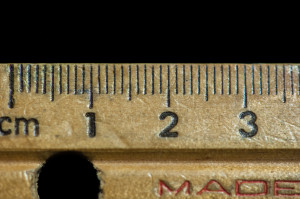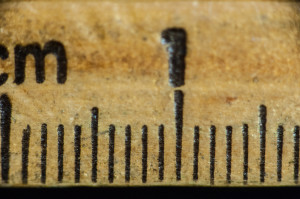Macro Photography – Magnification Ratio Calculation
Do you know how to determine the magnification ratio of your macro lens setup? In macro photography, a photo is deemed to be a ‘macro’ photo if it has a magnification ratio of at least 1:1.
What does this mean? This basically means that when you take a photo of a butterfly, the projected image of the butterfly on the camera’s sensor will be the actual size of the butterfly. If you are not achieving a 1:1 magnification ratio, then your photos are technically not macro photos. Photos that are less than the 1:1 magnification ratio, (eg. 1:2) are actually close up photos.
To help you understand this in more detail, let us look at the following example –

Magnification Ratio Example
To help us understand this in more detail, let’s associate some numbers to the examples. Let us assume that the camera’s sensor is 26mm in length. When 26mm of the actual image is projected onto the camera’s 26mm sensor, then this results in a magnification ratio of 1:1. When 52mm of the actual image is squeezed in to fit onto the camera’s 26mm sensor, then this results in a magnification ratio of 1:2. This means that your actual image size/magnification has been reduced to half. When 13mm of the actual image is projected onto the camera’s 26mm sensor, then this results in a magnification ratio of 2:1. This ultimately means that your actual image has doubled in size.
Calculate Your Magnification Ratio
To calculate your magnification ratio, you will need the following –
- Length size of your camera’s sensor (You can easily obtain this from the manufacturer’s website – or just Google your camera model + ‘sensor size’. eg. Nikon D80 sensor size)
- Ruler
The easiest way to calculate your magnification ratio is by taking a photo of a ruler.
- Lay your ruler on a flat surface and have your camera vertically above it.
- Aim at the ruler and try to locate the closest height where you can still focus onto the ruler. You will need to move your camera closer to the ruler while trying to focus onto the ruler. There will be a point where you will just not be able to focus on the ruler anymore. You want to locate the point right before that happens.
- When you have located the last point where the ruler is still in focus, take a photo of the measurement on the ruler.
- Compare that measurement to the length size of your camera’s sensor. For example, the sensor size on the manufacturer’s website may be 37mm x 24mm and your photo of the ruler shows approximately 37mm in length. This means that you have 1:1 magnification ratio (life size). If the photo of the ruler shows approximately 18.5mm, then you have 2:1 magnification ratio (twice the life size).
- Use the following formula to help you: Magnification = Sensor Width / # of mm captured in your photo

Photograph of a ruler with a macro lens – Approximately 37mm in length.
The above photo was captured with a macro lens only. Applying our formula (Magnification = Sensor Width / # of mm captured in your photo) –
Magnification = 37mm / 37mm = 1
Therefore an approximate magnification ratio of 1:1.

Photograph of a ruler with a macro lens + 68mm extension tubes – Approximately 17mm in length.
The above photo was captured with a macro lens and 68mm of extension tubes. Applying our formula (Magnification = Sensor Width / # of mm captured in your photo) –
Magnification = 37mm / 17mm = 2.17
Therefore an approximate magnification ratio of 2:1
We hope you enjoyed the hands on guide on how you can calculate your magnification ratio! This should give you an idea of whether you are actually shooting in ‘macro’ or not. If you are not achieving a ratio of 1:1, that’s OK! Don’t stress – from our point of view it is more important to get out there, learn about your camera and obviously enhance your macro photography knowledge and techniques. Keep shooting and remember to share some of your photos with us!
Recommended reading –









